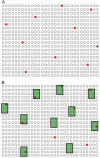Transforming the fight against tuberculosis: targeting catalysts of transmission
- PMID: 24982034
- PMCID: PMC4481585
- DOI: 10.1093/cid/ciu506
Transforming the fight against tuberculosis: targeting catalysts of transmission
Abstract
The global tuberculosis control community has committed itself to ambitious 10-year targets. To meet these targets, biomedical advances alone will be insufficient; a more targeted public health tuberculosis strategy is also needed. We highlight the role of "tuberculosis transmission catalysts," defined as variabilities in human behavior, bacillary properties, and host physiology that fuel the propagation of active tuberculosis at the local level. These catalysts can be categorized as factors that increase contact rates, infectiousness, or host susceptibility. Different catalysts predominate in different epidemiological and sociopolitical settings, and public health approaches are likely to succeed only if they are tailored to target the major catalysts driving transmission in the corresponding community. We argue that global tuberculosis policy should move from a country-level focus to a strategy that prioritizes collection of data on key transmission catalysts at the local level followed by deployment of "catalyst-targeted" interventions, supported by strengthened health systems.
Keywords: communicable disease control; epidemiology; transmission; tuberculosis.
© The Author 2014. Published by Oxford University Press on behalf of the Infectious Diseases Society of America. All rights reserved. For Permissions, please e-mail: journals.permissions@oup.com.
Figures


References
-
- World Health Organization. Geneva, Switzerland: WHO; 2013. World malaria report 2013.
-
- Averhoff F. Centers for Disease Control and Prevention. CDC health information for international travel 2014. New York: Oxford University Press; 2014. Hepatitis B.
-
- World Health Organization. Geneva, Switzerland: WHO; 2013. Global tuberculosis report 2013. ix, 9, 29.
-
- 67th World Health Assembly. Global strategy and targets for tuberculosis prevention, care and control after 2015. Available at: http://www.who.int/tb/post2015_tbstrategy.pdf?ua=1. Accessed 12 June 2014.
Publication types
MeSH terms
Grants and funding
LinkOut - more resources
Full Text Sources
Other Literature Sources
Medical

